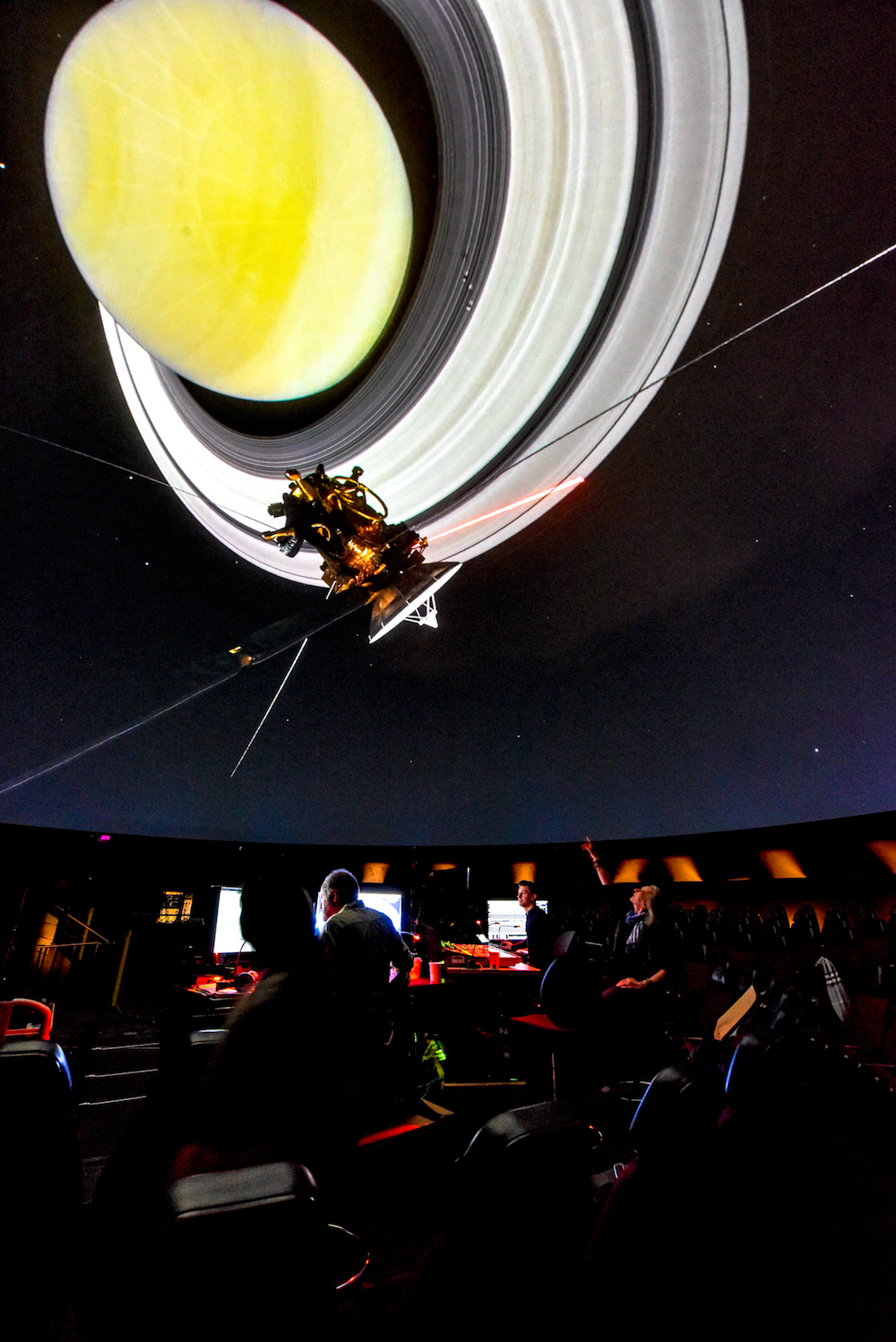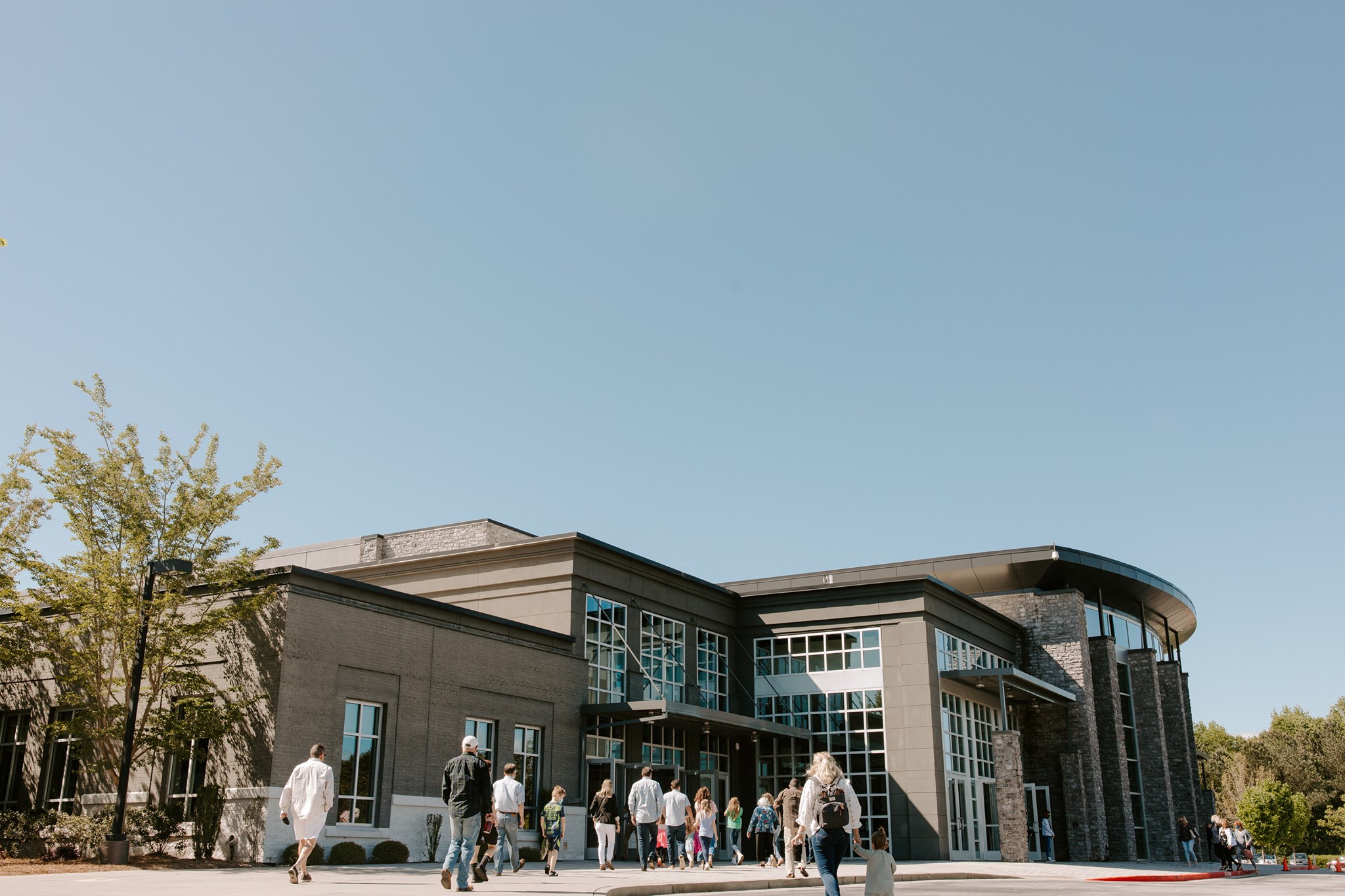Hayden Planetarium Debuts the World’s Most Immersive Space Show
‘Worlds Beyond Earth’ blasts off with Christie HDR projection and Meyer Sound object-based audio

Careening through the solar system, the audience is immersed in the immensity of space—the inky void of infinite nothingness pierced by the dazzling brilliance of innumerable celestial bodies.
On January 14, the American Museum on Natural History (AMNH) held a media preview of the Hayden Planetarium’s latest space show, Worlds Beyond Earth. The production is the first media presentation designed to take full advantage of the immense dynamic range enabled by the planetarium’s new Christie Eclipse RGB laser projection system, which the museum’s president Ellen V. Futter called “the most sophisticated projection system in the world.”
[Christie Helps AMNH Celebrate the Moon Landing with a Giant Leap in Projection Technology]
Part of the AMNH’s 150th anniversary celebration, the film flies viewers through the solar system, with Academy Award winner Lupita Nyong’o narrating the journey. The presentation—which is built on data from NASA, European Space Agency, and Japan Aerospace Exploration missions, telescopes, and supercomputer simulations—gives the audience a look at the wonders of our cosmic neighborhood with a degree of immersion that was previously impossible.

“This is the beginning of a whole new opportunity for people to see what is possible with a projection system,” said Larry Paul, executive director, technology and custom solutions, enterprise and entertainment at Christie. “It’s been a ‘chicken-or-the-egg’ problem: no one’s ever created a show that really takes advantage of [this technology] because the systems didn’t exist. Now that the systems exist, it will enable the creation of shows that are much more compelling.”
According to Paul, the projection system took some five years to engineer, beginning in 2015, when the company first began collaborating on its development with the museum. Previously, the planetarium had employed projection systems that could get bright but couldn’t preserve the darkness required to emulate the blackness of space; they also had systems that were dark, but couldn’t generate enough light.
This new system, comprised of six specially designed Christie Eclipse RGB laser projectors capable of 20,000,000:1 contrast, is not only the best of both of these worlds, but also provides UHD resolution, Rec. 2020 color, and 60FPS playout. Worlds Beyond Earth was created to take advantage of all of these capabilities.
A daily selection of features, industry news, and analysis for AV/IT professionals. Sign up below.
“This show has four times the resolution and two times the frame rate [of what was previously possible],” said Benjy Bernhardt, senior director of electronic media engineering and support at the AMNH. “The data is eight times bigger for the same duration of the show. We needed more storage, we needed a faster network, and we needed new video servers that could process more data and get it onto screen.” Helping to solve this are 7thSense Delta Infinity servers, which are capable of handling the 8120x8120 resolution video files of the show.
In addition to the unparalleled video experience, the presentation also incorporates an object-based audio system featuring 23 speaker channels, two subwoofer channels, and a seat shaker. This adds a gripping cinematic dynamic to show, heightening the experience of flying through the rings of Saturn and watching the formation of the Sun.

The system is composed of Meyer Sound speakers and was mastered using Meyer’s D-Mitri platform. “With the 23.3 [channel system], you’re in a kind of one-off special-venue domain, and you need special mixing tools,” Bernhardt said. “You also can only mix in the space.” To achieve the desired result, Bernhardt said the production’s mixing team worked essentially all night for six straight weeks, whenever the planetarium was closed to the public. In addition to the sound effects and Nyong’o’s narration, Worlds Beyond Earth also features an original score composed by Robert Miller that was recorded in Abbey Road Studios in London. So, the mixing team had to take exceptional care to ensure that all of these elements are presented harmoniously. “It’s a fine ballet, a balancing act,” Bernhardt said.
Overall, the production took 18 months from storyboarding to completion. On January 21, it will open to the public, allowing humans to get as close to the experience of space travel as is possible on Earth.
Matt Pruznick is the former editor of AV Technology, and senior editor for Systems Contractor News and Residential Systems. He is based in New York.

